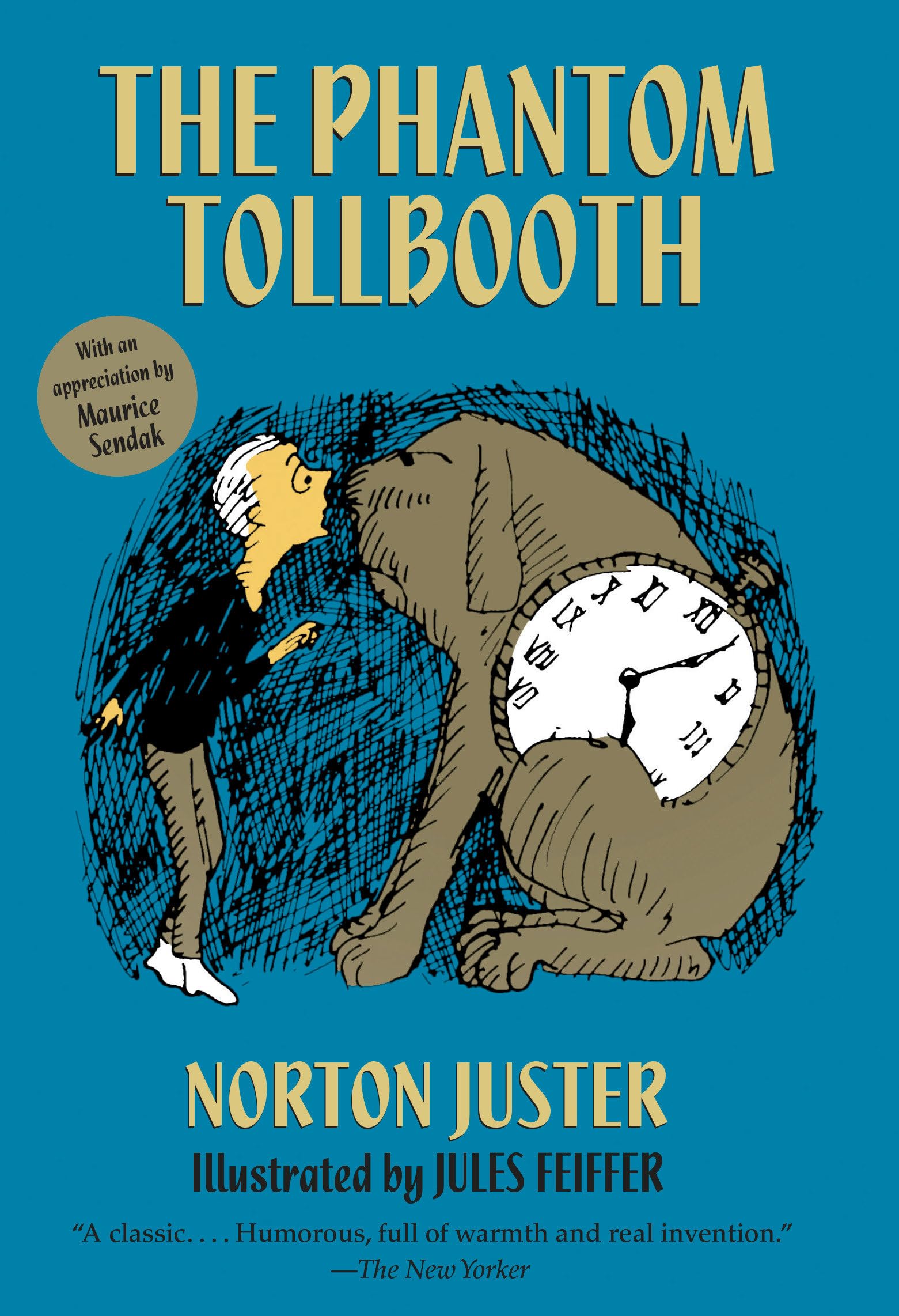Book Summary
Norton Juster’s *The Phantom Tollbooth* (1961) follows Milo, a perpetually bored boy who discovers a magical tollbooth in his room. Driving through it in his toy car, he enters the Kingdom of Wisdom, a fantastical land divided between the warring cities of Dictionopolis (devoted to words) and Digitopolis (obsessed with numbers). Accompanied by Tock, a literal “watchdog” with a clock for a body, and the pompous Humbug, Milo embarks on a quest to rescue the exiled Princesses Rhyme and Reason. Their absence has left the kingdom in chaos, symbolizing the dangers of intellectual imbalance.
Juster’s narrative brims with puns, allegories, and witty wordplay—like the Doldrums, where lethargic creatures waste time, or the Island of Conclusions, reachable only by jumping. The story’s climax sees Milo confronting demons like the Terrible Trivium (embodying procrastination) in the Mountains of Ignorance. Returning home, Milo finds only an hour has passed, but his perspective is forever changed: the mundane world now thrums with possibility.
Key Themes
*The Phantom Tollbooth* champions the joy of learning through its central conflict: the feud between King Azaz and the Mathemagician over whether words or numbers are superior. The princesses’ decree—that both are equally vital—underscores Juster’s belief in balanced education. Milo’s journey mirrors a child’s intellectual awakening, transforming apathy into curiosity.
Another theme is the perils of modern haste. Alec Bings shows Milo the vanished city of Reality, where people rushed past beauty without seeing it—a critique of postwar suburban ennui. The novel urges readers to savor the “in-between” moments, a message echoed in Milo’s realization: “The most important reason for going from one place to another is to see what’s in between.”
What Makes It Unique
Juster’s background as an architect shines in the book’s meticulously crafted world. Locations like the Word Market (where letters are sold) or the Number Mine (digging up arithmetic gems) turn abstract concepts into tangible, playful landscapes. Jules Feiffer’s illustrations—spiky and surreal—complement this whimsy.
The novel’s layered humor appeals to all ages. Children relish the absurdity (e.g., the 0.58 child from “Averageville”), while adults chuckle at satirical jabs like the bureaucrat Whether Man, who drowns Milo in circular logic. Unlike moralizing children’s tales, *Tollbooth* trusts readers to glean insights organically.
Reader Reactions
Decades after publication, fans still celebrate Milo’s adventure. Parents report children delighting in Tock’s loyalty, though some note the Humbug’s verbosity tests younger attention spans.
Critics highlight its timeless relevance. One reviewer wrote, “It’s about *thinking*—how to ask questions, spot nonsense, and marvel at the world.” The book’s enduring sales attest to its cross-generational appeal.
About the Author
Norton Juster (1929–2021) was an architect by trade but a storyteller at heart. Born in Brooklyn, he wrote *Tollbooth* while procrastinating on a Ford Foundation grant about urban planning. His synesthesia (mixing sensory perceptions) influenced the book’s vivid wordplay.
Juster’s architectural mindset shaped the novel’s structure. Maps of the Kingdom of Wisdom anchor the fantasy in geospatial logic, while themes of rebuilding fractured realms mirror his real-world designs.
Memorable Quotes
“You must never feel badly about making mistakes… as long as you take the trouble to learn from them.”
“What you can do is often simply a matter of what you *will* do.”
“The way you see things depends a great deal on where you look at them from.”
